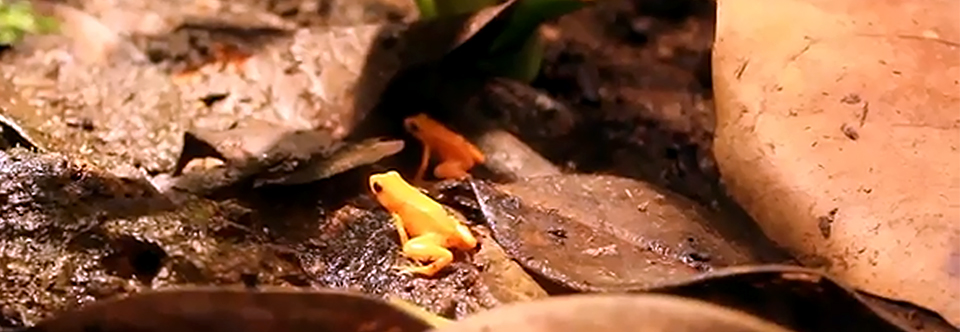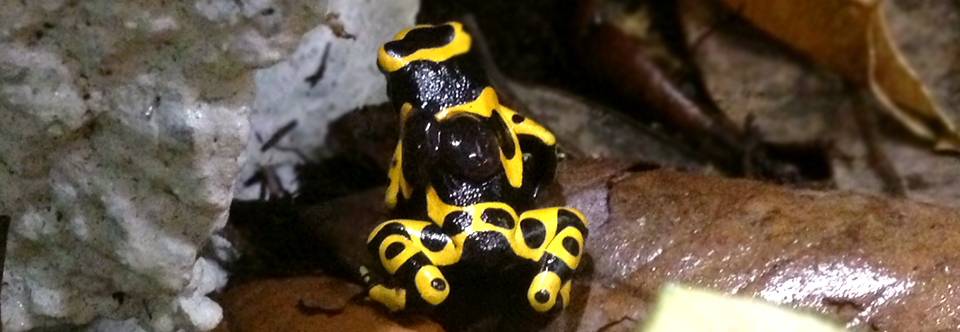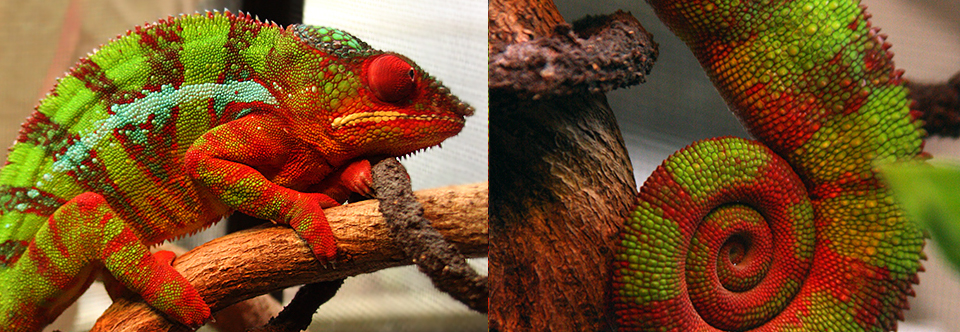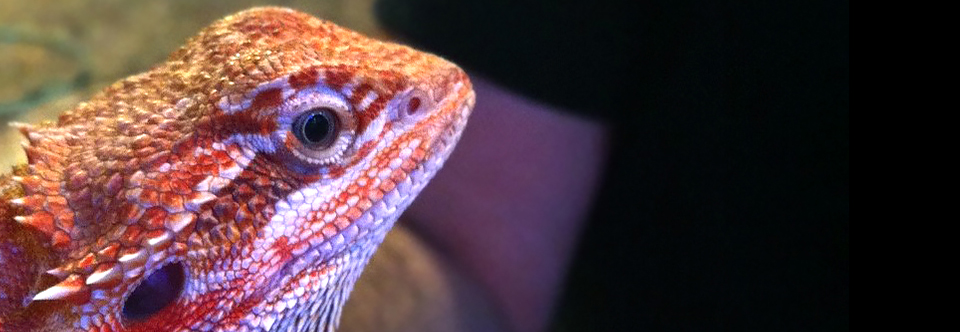
by Fauna | Oct 2, 2013 | Amphibians, Blog, Frogs
Mantellas are a colorful and diverse genus of terrestrial frogs from Madagascar. At Fauna, we have a breeding group of golden mantellas (Mantella aurantiaca). You may have seen them hopping around in their terrarium on the front counter. Given the right conditions, Mantella aurantiaca breed readily in groups. They breed during the wet season, which means they need high humidity (over 80%), lots of misting, and LOTS of flightless fruit flies dusted with calcium and vitamins. If everything is right, the sexually mature males will begin to call. Unlike many species of frogs, mantellas only call during the day. Their throat puffs up and they make a short clicking noise to attract a female. If a female deems him adequate, she will follow him to a secluded spot to lay her eggs – usually on the water’s edge. He then fertilizes them and they both abandon the eggs. The small, white eggs develop into a tadpole in 2-6 days. Then the round, protective jelly encasing each egg collapses into a large blob of fluid. In the wild, rainwater would wash the tadpoles out into the water below. We remove the eggs and place them on a rock at the water’s edge in our tadpole tank. They are misted to keep moist until they are large enough to wiggle themselves free. The tadpole tank has a few rocks and plants for them to hide. A partially submerged piece of slate, placed at an angle, allows the hatching tadpoles to slip into the water. It is also useful for metamorphosing tadpoles to exit, emerging as...

by Fauna | Sep 30, 2013 | Amphibians, Frogs
Here’s a group of 5 eggs eggs from a poison dart frog called Dendrobates leucomelas. Like most terrestrial species of darts, the females will lay the eggs on a flat, well hidden surface on the forest floor. This female chose a small leaf that was covered by a few larger ones. After about a week, the tadpoles will form. Here they are almost fully developed but still encased in their eggs. You can see how each one is separated into a small sphere surrounded by the jelly mass. At this point, we moved the eggs and put them in a petri dish on top of wet sphagnum moss to provide the necessary humidity. If the eggs are not removed from the tank, the male will carry the developed tadpoles on his back. He will then deposit them in a small pool of water. They are left there to fend for themselves. . To learn more about Fauna NYC, visit our website! Sign up for our eNewsletter for new animal arrivals, product discounts, and upcoming...

by Fauna | Sep 24, 2013 | Aviary, Services
Hockney is a Bronze-winged Pionus (Pionus chalcopterus). Daniel making house calls this week! Alex assists as Daniel trims Hockney’s nails using a dremel tool, smoothes out some rough edges on the beak and tip, and trims his wings. If you have wings, nails or beaks growing out of control, don’t stress your animal by taking it to be groomed when we can get it into shape in minutes right in your home. This minimizes stress, and eliminates exposure to other animals that could be ill. Call us to learn more (212) 877-2473. . To learn more about Fauna NYC, visit our website! Sign up for our eNewsletter for new animal arrivals, product discounts, and upcoming...

by Fauna | Sep 20, 2013 | Blog, Reptiles
Huey is our resident panther chameleon (Furcifer pardalis) who lives in an extra-large screen cage in the front of our store. He’s usually mostly green, but with all the red in his face, you can see why they’d say he was, “fired up.” A lot of people say that when they greet Huey, he will respond by climbing up the screen to meet them. The name Panther Chameleon comes from it’s scientific name Furcifer pardalis. Furcifer means “forked”, referring to their feet, and pardalis means “spotted” as in a leopard or panther. These fascinating creatures can grow to be 20 inches in length! . To learn more about Fauna NYC, visit our website! Sign up for our eNewsletter for new animal arrivals, product discounts, and upcoming...

by Fauna | Sep 18, 2013 | Events, Herpetology Club
September means back to school, and it also means we welcome back members of Fauna’s Herpetology Club! Our first meeting served as an introduction to the science of herpetology as we learned the key distinguishing characteristics of reptiles and amphibians, as well as the differences between the two. We then had an extensive hands-on session in our Reptile Room, as we met all the new reptiles at the shop. We had a chance to compare the different textures of the reptiles’ scales, and learned about key differences between lizards and snakes. Our meeting ended with a behind-the-scenes tour of the shop where we got to see where the animals’ meals are prepared and where our breeding reptiles are kept. Written by Jose Rodriguez, Fauna’s Eco-Education Coordinator. Jose runs various programming aimed at different age levels. . To learn more about Fauna NYC, visit our website! Sign up for our eNewsletter for new animal arrivals, product discounts, and upcoming...






